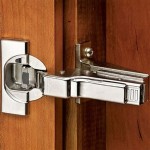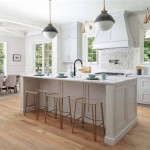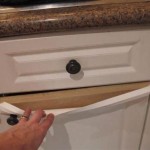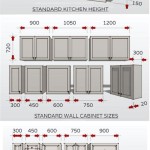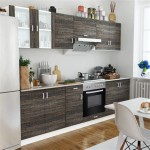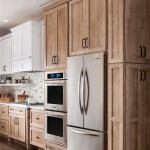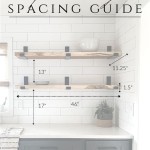Kitchen Cabinet Pantry Shelves: Maximizing Space and Organization
The kitchen pantry is a critical element in any well-functioning home. It provides a dedicated space for storing non-perishable food items, cooking ingredients, and often, small appliances. The effectiveness of a pantry hinges significantly on its shelving system. Well-designed kitchen cabinet pantry shelves can dramatically improve storage capacity, accessibility, and overall organization, transforming a cluttered space into an efficient and user-friendly area. This article explores the various aspects of kitchen cabinet pantry shelves, including types, materials, design considerations, and installation tips, providing a comprehensive guide to optimizing pantry storage.
Types of Kitchen Cabinet Pantry Shelves
The market offers a diverse array of kitchen cabinet pantry shelves, each suited to different needs and preferences. Understanding the available options is the first step in selecting the most appropriate shelving system for a specific pantry. This section delves into several common types.
Fixed Shelves: Fixed shelves are the most traditional and often the most economical option. These shelves are permanently attached to the pantry walls or cabinet frame, typically using screws, nails, or dowels. While they offer stability and can support significant weight, their fixed nature limits adjustability. Fixed shelves are best suited for items that are frequently used and require consistent placement.
Adjustable Shelves: Adjustable shelves offer greater flexibility by allowing the user to reposition them at different heights. This adaptability is beneficial for accommodating items of varying sizes and optimizing vertical space. Adjustable shelves typically utilize shelf supports, such as shelf pins or tracks, which are inserted into pre-drilled holes or mounted rails. This system allows for easy rearrangement as storage needs evolve.
Pull-Out Shelves: Also known as sliding shelves or roll-out shelves, pull-out shelves provide convenient access to items stored at the back of the pantry. These shelves are mounted on sliding mechanisms, allowing them to be extended outward, bringing the contents into clear view. Pull-out shelves are particularly useful for deep pantries where reaching items at the back can be challenging. They are available in various materials and configurations, including full-extension and partial-extension options.
Wire Shelves: Wire shelves are a common choice for pantries due to their affordability and open design, which promotes air circulation. This is particularly advantageous for storing produce and other items that require good ventilation. However, wire shelves can be less stable than solid shelves and may not be suitable for storing small items that could fall through the gaps. Liners or shelf protectors can be used to mitigate this issue.
Lazy Susans: Lazy Susans, also known as revolving shelves, are circular shelves that rotate, providing easy access to items stored on all sides. They are particularly effective for corner cabinets or hard-to-reach areas within the pantry. Lazy Susans can be constructed from various materials, including wood, plastic, and metal, and are available in different sizes and configurations.
Door-Mounted Shelves: Door-mounted shelves utilize the often-underutilized space on the inside of the pantry door. These shelves are typically narrower and shallower than standard pantry shelves and are ideal for storing spices, condiments, and other small, lightweight items. Door-mounted shelves can significantly increase storage capacity without taking up valuable shelf space within the pantry.
Materials for Kitchen Cabinet Pantry Shelves
The choice of material for kitchen cabinet pantry shelves is crucial, as it affects the shelf's durability, aesthetics, and overall performance. Different materials offer varying levels of strength, resistance to moisture, and cost. This section explores the common materials used in pantry shelf construction.
Solid Wood: Solid wood shelves are a premium option, offering exceptional strength, durability, and aesthetic appeal. Wood shelves can be stained or painted to match the existing kitchen décor. Common wood species used for pantry shelves include oak, maple, pine, and cherry. Solid wood is a good choice for pantries that require a high load-bearing capacity and a classic, elegant look. However, solid wood is generally more expensive than other materials and may be susceptible to warping or cracking if exposed to excessive moisture.
Plywood: Plywood is an engineered wood product made from layers of wood veneer glued together. It is a strong and stable material that is less prone to warping than solid wood. Plywood is a cost-effective alternative to solid wood and can be stained or painted to achieve a desired finish. When selecting plywood for pantry shelves, it is important to choose a grade that is suitable for interior use and has a smooth, paintable surface.
Particleboard: Particleboard is another engineered wood product made from wood chips and resin. It is a more affordable option than plywood but is also less durable and moisture-resistant. Particleboard shelves are typically laminated with a decorative veneer or melamine coating to provide a finished surface. Particleboard is best suited for pantries that do not require a high load-bearing capacity and are not exposed to excessive moisture.
Medium-Density Fiberboard (MDF): MDF is an engineered wood product made from wood fibers and resin. It has a smooth, uniform surface that is ideal for painting. MDF is more moisture-resistant than particleboard but less so than plywood. MDF shelves are a good choice for pantries that require a smooth, paintable surface and moderate load-bearing capacity.
Metal: Metal shelves, typically made of steel or stainless steel, offer excellent strength and durability. They are also resistant to moisture and pests. Metal shelves are often used in commercial kitchens and pantries due to their hygienic properties and ease of cleaning. Metal shelves can be coated with a powder-coated finish to prevent rust and provide a decorative appearance. However, metal shelves can be more expensive than wood or engineered wood options.
Laminate: Laminate shelves consist of a particleboard or MDF core with a decorative laminate surface. Laminate is a durable and easy-to-clean material that is available in a wide range of colors and patterns. Laminate shelves are a cost-effective option for pantries that require a low-maintenance surface. However, laminate can be susceptible to chipping or peeling if damaged.
Key Considerations for Pantry Shelf Design and Installation
Designing and installing kitchen cabinet pantry shelves requires careful planning and attention to detail. Several key considerations can significantly impact the functionality and aesthetics of the pantry. This section outlines crucial design and installation aspects.
Space Assessment: Before selecting and installing pantry shelves, it is essential to accurately assess the available space. This involves measuring the height, width, and depth of the pantry, as well as identifying any obstructions, such as pipes or electrical outlets. Understanding the dimensions of the pantry will help determine the number and size of shelves that can be accommodated.
Storage Needs: Evaluate the types and quantities of items that will be stored in the pantry. This will help determine the appropriate shelf spacing and configuration. For example, taller items, such as cereal boxes or bottles, will require higher shelves, while smaller items, such as cans or jars, can be stored on lower shelves. Consider the weight of the items to be stored when selecting shelf materials and supports.
Shelf Spacing: Optimizing shelf spacing is crucial for maximizing storage capacity and accessibility. A general guideline is to allow for a minimum of 12 inches of vertical space between shelves for taller items and 8-10 inches for shorter items. Adjustable shelves offer the flexibility to customize shelf spacing as needed. Consider storing similar items together and grouping them by size to create a more organized pantry.
Shelf Depth: The optimal shelf depth depends on the depth of the pantry and the types of items to be stored. Deeper shelves can accommodate larger items but may make it difficult to reach items at the back. Shallower shelves provide better visibility and accessibility but may limit storage capacity. A common shelf depth for pantries is 12-16 inches.
Weight Capacity: Ensure that the shelves and supports are capable of supporting the weight of the items that will be stored on them. Solid wood and metal shelves typically have a higher weight capacity than particleboard or MDF shelves. When installing shelves, use appropriate shelf supports, such as shelf pins or brackets, and secure them properly to the pantry walls or cabinet frame.
Accessibility: Design the pantry shelves to maximize accessibility to all items. This can be achieved by using pull-out shelves, lazy Susans, or door-mounted shelves. Consider the reach and mobility of the users when determining shelf height and placement. Store frequently used items at eye level and less frequently used items on higher or lower shelves.
Lighting: Adequate lighting is essential for visibility within the pantry. Consider installing under-cabinet lighting or interior pantry lights to illuminate the shelves and make it easier to find items. LED lights are an energy-efficient and long-lasting option.
Ventilation: Proper ventilation is important for preventing moisture buildup and mold growth in the pantry. Wire shelves promote air circulation, but solid shelves can also be used if the pantry is well-ventilated. Avoid storing perishable items in airtight containers, as this can trap moisture.
Installation Techniques: Proper installation is crucial for ensuring the stability and safety of pantry shelves. When installing fixed shelves, use screws or nails that are long enough to penetrate the pantry walls or cabinet frame. When installing adjustable shelves, ensure that the shelf supports are securely inserted into the pre-drilled holes or mounted rails. Use a level to ensure that the shelves are installed horizontally.
Safety Considerations: Prioritize safety when designing and installing pantry shelves. Avoid overloading shelves, as this can cause them to collapse. Secure heavy items to the shelves to prevent them from falling. Use safety glasses and gloves when cutting or drilling materials. If unsure about any aspect of the installation process, consult a professional contractor.
By carefully considering these design and installation aspects, one can create a functional, organized, and aesthetically pleasing kitchen cabinet pantry shelving system that maximizes space and enhances the overall efficiency of the kitchen.

Pantry Storage Cabinets Built For Busy Kitchens

Pantry Storage Cabinets Built For Busy Kitchens

Hlr 72 Inches Kitchen Pantry Storage Cabinet Cabinets With Drawer And Adjustable Shelves For Bathroom Livingroom Dining Room White Com

64 Kitchen Pantry Cabinets White Storage Cabinet With Adjustable Shelves Doors Buffet Cupboards Sideboard Office Use Com

Utility Storage Cabinet Schrock Cabinetry

Kitchen Cabinet Lora Storage Pantry Gkw Retail

Costway 41 In White Farmhouse Kitchen Pantry Storage Cabinet With Doors Adjustable Shelves Kc53383wh The Home Depot

Pantry Cabinets 7 Ways To Create And Kitchen Storage Small Tiny House

Farmhouse 47 Kitchen Pantry Cabinet White Freestanding Buffet Cupboa And Bath

Pantry Cabinet Plans Pictures Ideas Tips From
Related Posts

